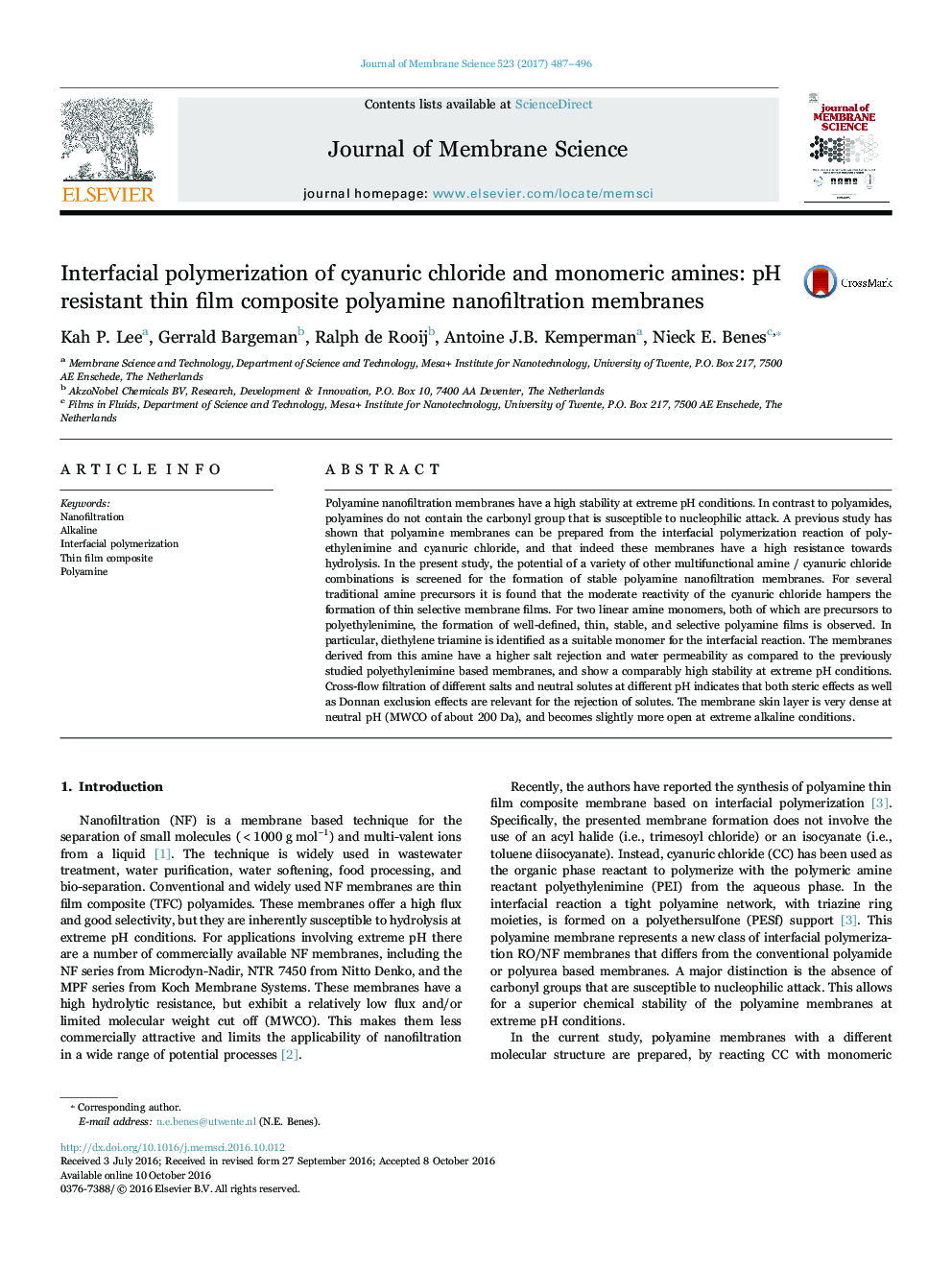| Article ID | Journal | Published Year | Pages | File Type |
|---|---|---|---|---|
| 4989076 | Journal of Membrane Science | 2017 | 10 Pages |
â¢Fabrication of pH-resistant nanofiltration membranes from monomeric amines and cyanuric chloride.â¢Tight membranes require amines with at least 3 reactive groups; highest perm-selectivity is observed for diethylene triamine.â¢Resistance to hydrolysis due to the absence of polyamide carbonyl groups.â¢At extreme pH, membrane rejection for small neutral decreases reversibly.
Polyamine nanofiltration membranes have a high stability at extreme pH conditions. In contrast to polyamides, polyamines do not contain the carbonyl group that is susceptible to nucleophilic attack. A previous study has shown that polyamine membranes can be prepared from the interfacial polymerization reaction of polyethylenimine and cyanuric chloride, and that indeed these membranes have a high resistance towards hydrolysis. In the present study, the potential of a variety of other multifunctional amine / cyanuric chloride combinations is screened for the formation of stable polyamine nanofiltration membranes. For several traditional amine precursors it is found that the moderate reactivity of the cyanuric chloride hampers the formation of thin selective membrane films. For two linear amine monomers, both of which are precursors to polyethylenimine, the formation of well-defined, thin, stable, and selective polyamine films is observed. In particular, diethylene triamine is identified as a suitable monomer for the interfacial reaction. The membranes derived from this amine have a higher salt rejection and water permeability as compared to the previously studied polyethylenimine based membranes, and show a comparably high stability at extreme pH conditions. Cross-flow filtration of different salts and neutral solutes at different pH indicates that both steric effects as well as Donnan exclusion effects are relevant for the rejection of solutes. The membrane skin layer is very dense at neutral pH (MWCO of about 200Â Da), and becomes slightly more open at extreme alkaline conditions.
Graphical abstractDownload high-res image (174KB)Download full-size image
